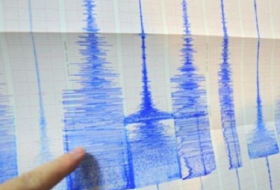There was clearly some goth going on on Jacobs’s dramatic catwalk, next to Victorian dresses, Art Deco gowns, and some reminiscences of Spanish court dress. Even the hair was in a ’20s-style fingerwave.
Jacobs’s show in a way summed up the mood of an entire season: lots of fashion designers at NYFW were clearly craving for another era, whether it’d be the Victorian Age, the ’70s or Goth Punk.
At the Diane von Fürstenberg headquarters in the Meatpacking District, models—and von Fürstenberg herself—were dancing, as if they hanging out at Studio 54 in the ’70s.
Sleek splits, dramatic cleavage, even a gold version of her iconic wrap dress: it was all there. Even for daytime, DVF came up with Diane Keaton-inspired large bowtie blouses and over the knee woollen skirts that are so reminiscent of that period.
Nicole Miller also presented long boho dresses (many with a deep V), only a little different from how Tory Burch envisioned her take on the ’70s—the designer’s starting point being Éric Rohmer’s L’Amour l’après-midi, a tale of extramarital love. Burch’s multicoloured coats in geometric patterns set the tone.
Joseph Altuzarra sported the same ’70s cocktail of paisley motifs, peasant dresses, and drawstring pants. His moodboard was inspired by Jim Jarmusch’s Only Lovers Left Alive.
A bunch of designers opted for the romantic view of the Victorian Age. Chaste silhouettes with long sleeves and high necks (full of frills, lace and tule) were everywhere, but especially at Prabal Gurung, Derek Lam, and Rodarte, where the models looked like modern day Victoriana ladies.
Backstage, Laura Mulleavy (one of the two sisters designing Rodarte) explained how the collection really was an ode to Art Nouveau romance, inspired by music posters and witchy fantasy.
The whole collection seemed patchworked together, especially the boots, which were made of collage-like panels—some of which could also be spotted on lacy dresses, even with veils.
Asked about the latter, the designer talked about The Godfather, the Francis Ford Coppola movie series in which the Corleone family spends many hours at weddings and funerals. Apart from the nostalgia turned contemporary, here was a collection full of craftmanship and detail.
Such was also the case at Thom Browne, who had clearly spent some time reading about the Great Depression and how men and women were dressed back then. “It’s all about reappropriating the clothing you loved when you bought things when you were rich in the ’20s,” Browne said backstage.
His setting was amazing: It felt like being surrounded by 19th century residences, lined with a dirt walkway, on which even some men in Edwardian style treads strutted by. This was utter sartorial sentiment, which of course Thom Browne is a master at, season after season.
At Tommy Hilfiger, the mood was nautical, the setting being the deck of a cruise ship called T.H. Atlantic, filled with models walking in admiral jackets, sailor pants, and printed silk dresses adorned with beautiful jewelry and sailor collars. The mood here was lots of ’40s flair, when going on a cruise was a privilege for the rich and wealthy.
Are designers becoming more nostalgic? Has a fractured, angry, worried world led them to go back in time, believing what was in the past was obviously better?
The Belgium-based psychoanalyst Lieven Jonckheere told me that “fashion can never go forward,” for many reasons, one being that fashion is a language.
Jonckheere referred to French philosopher Roland Barthes’s book, Système de la Mode. “In that book, Barthes suggests that progress (in fashion) is not possible, because fashion always comes in opposite cycles. After long comes short, after tight, comes wide, after covered-up, overly sexy, et cetera. You never really make progress, because you always look back and reinterpret.”
Barthes relates it also nostalgia, and claims—notes Jonckheere—that “every form of nostalgia incorporates a fraud of the past. Nostalgia literally means the pain of not being able to go back to a certain place or time. One will try to do whatever it takes to accomplish this, but the real thing will never come back. So if we talk about the ’40s or the ’70s being evoked on a fashion catwalk, it’s always a fraud, because it’s never really the same thing as back then.”
Of course it isn’t the same, and that’s plain to see, especially when you look closer. Fabrics are different and much more contemporary (some are even technological). In some cases the designs looked especially well-made, almost haute couture-like, when they were referencing some eras when every single outfit was made by hand.
Thus, today’s catwalk truly refers to an era gone by, an ode to what was—yet still taking into consideration today’s woman, with all her dreams and demands.
More about:
















































